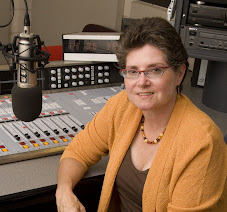If you listen to Lincoln Avenue regularly, you know that one of my key concerns about our community is racial division. The Youngstown metropolitan area is among the most segregated in the US, and while we’ve made progress in reducing racial barriers we still have a long way to go. This week on the show, I’m talking with two local ministers who are challenging those divisions by creating conversations about race and the effects of racism in our community. Rob Johnson is the pastor at two local Lutheran churches, Bethlehem and Christ. Lew Macklin leads Holy Trinity Missionary Baptist Church. They have worked together, as members of the Interdenominational Ministerial Alliance, on a project called Jacob’s Well, which brings black and white Christians together to talk honestly about race.
I’ve attended the two Jacob’s Well events (and played a very small role in planning them), and even as a non-Christian and therefore an outsider in many ways, I’ve seen the powerful potential for something as simple as conversation. But I also understand, as I discuss with Johnson and Macklin in our interview, how difficult such conversations can be. People need to feel some common ground – in this case a shared religious perspective – and to feel that their experiences and views will be heard and respected. Given the history of contentious debate, shame, anger, guilt, and resentment related to race in this country, creating the conditions for people to come together is not easy. Realistically, only people who already care about fighting racism are likely to participate, which can create a sense of preaching to the proverbial choir. On the other hand, as Johnson and Macklin can attest, even among people who come to the table with goodwill and a shared intention, making personal connections can create change.
Perhaps the best evidence of that is in the local Interdenominational Ministerial Alliance itself. In most cities around the country, that group consists only of African-American ministers, and the group’s primary focus is on addressing the needs of the black community, mostly in urban settings. Given the history of racial divisions in Youngstown, it’s striking that our local IMA is one of very few that has both white and black members. Why? If I understand the history correctly, it’s because white ministers recognized their responsibility to work against racism, and they saw working closely with their African-American counterparts as a way to pursue that goal. At the same time, African-American ministers had to learn to trust people who might otherwise be seen as outsiders, or even as having distinctly different interests. For everyone involved, the key to collaboration is understanding that relationships are the foundation on which social change is built.
In other words, in our highly segregated, divided community, the men and women of the IMA offer a model – not for moving past race but for instead addressing the economic and social inequities associated with racial difference by building interracial relationships. Imagine what might happen if more white people took the position that ministers like Rob Johnson do, that fighting racism is our ethical and moral responsibility and that the first step is to reach out and make personal connections with African-Americans. Imagine what might happen if more black people were willing to follow Lew Macklin’s lead and take the risk of talking honestly with whites and creating relationships from which to work for change.
